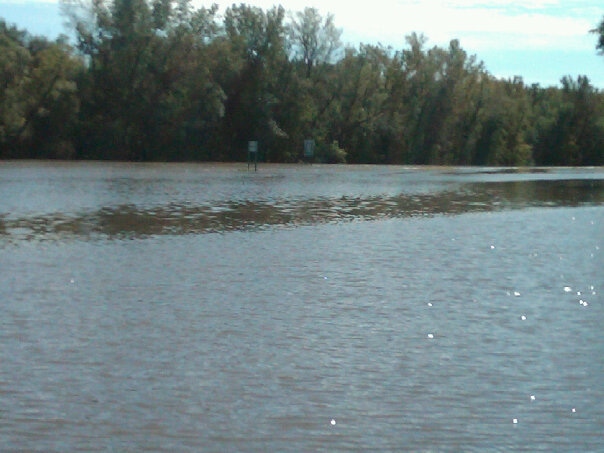May 4, 2011

Much of the vegetation visible from the road is comprised of winter annual species, including the now obvious yellow-flowered species cressleaf groundsel (a.k.a. butterweed) and yellow rocket. Certain summer annual weed species, such as common lambsquarters and smartweeds, also have begun to emerge. When field conditions become conducive for planting, several possible scenarios exist for the management of existing weed vegetation. One possible scenario is that planting will occur before any type of weed management program (tillage or herbicide application) is implemented to control existing vegetation. In other instances herbicides that were applied earlier this spring often have done well at controlling winter annual species. The following reminders and suggestions might help overcome some of the weed management problems already visited upon farmers by this season’s challenging planting conditions.
The labels of most 2,4-D formulations specify intervals that must elapse between application and planting. If you plan to make a burndown herbicide application and plant corn or soybean less than seven days later, leave out the 2,4-D and adjust the rate(s) of the other burndown herbicide(s) or include a different herbicide.
Contact herbicides – such as paraquat or glufosinate – may not be as effective as translocated herbicides against larger weeds, but can begin to desiccate existing vegetation much quicker than translocated herbicides. Adding a triazine herbicide such as atrazine or metribuzin to paraquat or glufosinate often improves overall burndown performance. When the application of contact herbicides is followed by one or more cloudy days, expect symptoms to take a bit longer to develop.
Would applying a burndown herbicide prior to preplant tillage improve control of larger weeds? This could improve overall control in many situations, but when applying a translocated herbicide such as glyphosate, it would be advisable to wait 24-48 hours between application and tillage in order to provide adequate time for the herbicide to translocate within the target vegetation. Generally, the longer the interval, the more complete the control of existing vegetation ultimately will be.
Closing the seed furrow can be difficult if planting in wet soil conditions. This in itself can lead to crop establishment problems, but if a pre-emergence herbicide will be applied soon after planting an open seed furrow provides an avenue for direct contact of the herbicide with the seed. Labels of many soil-applied herbicides warn that severe crop injury can result if the herbicide comes in direct contact with the seed.
Most soil-residual herbicides can be applied either prior to or immediately after planting. Additionally, some soil-residual products can be applied after crop emergence, whereas others must be applied before crop emergence. If you plan to use a soil-residual herbicide but are unsure when it will be applied, be sure to check the label to determine if it can be applied after crop planting and/or emergence in case the application is delayed.
Be especially cautious about making pre-emergence applications to fields where the corn is within a day or two of emerging, especially with non-selective herbicides or soil-applied herbicides that should NOT be applied after crop emergence. Even if the crop hasn’t fully emerged or isn’t yet visible from the road, small cracks or other openings in the soil surface may allow the herbicide to come into direct contact with the emerging coleoptile. Do not use nitrogen fertilizer as the herbicide carrier if corn has begun to emerge.
If you plan to include products containing saflufenacil (Sharpen, Optill or Verdict) for burndown prior to soybean planting, remember that the labels of these products prohibit tankmixing or sequential applications of other soil-applied PPO-inhibiting herbicides within 30 days of planting.
Fields in which a herbicide was applied several week ago are excellent candidates for scouting prior to planting. The heavy precipitation in many areas of the state may have moved some soil-applied herbicides deeper into the soil profile than is conducive for good weed control. If weeds are present, you should consider controlling them prior to planting. Why not just wait and spray after planting? That may be a feasible option, but the planting operation will likely injure some of the weeds, and they will need time to recover before being sprayed. Waiting to control the existing weeds after planting is also gambling that the weather will cooperate and allow you to make the application before the existing weeds begin to adversely impact the crop. The less-than-ideal growing conditions may also increase the likelihood of corn injury from some soil-applied herbicides.
You May Also Like




